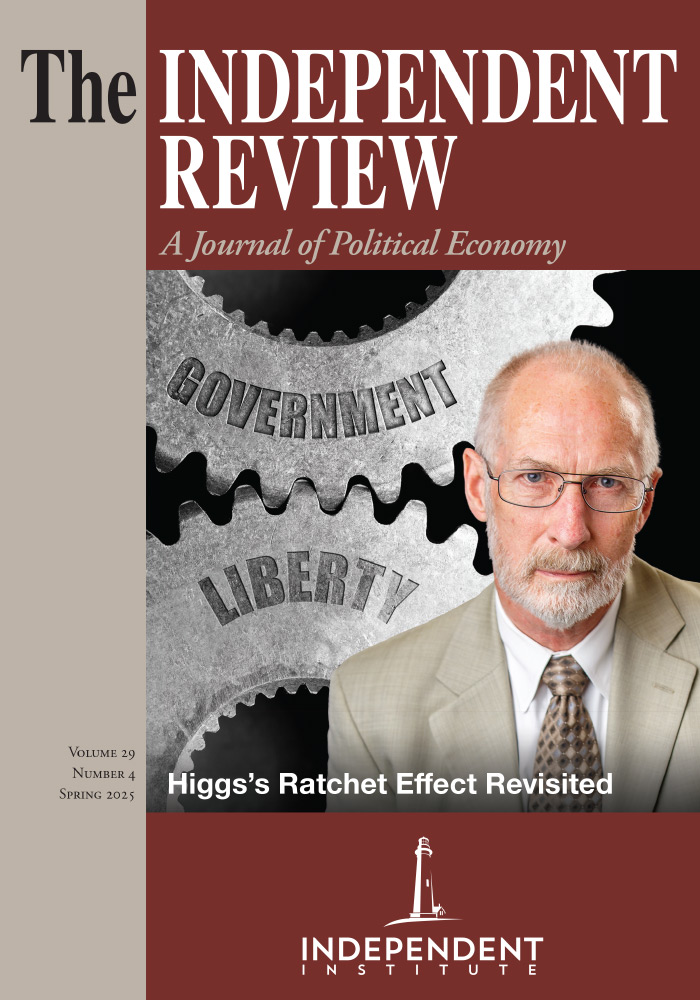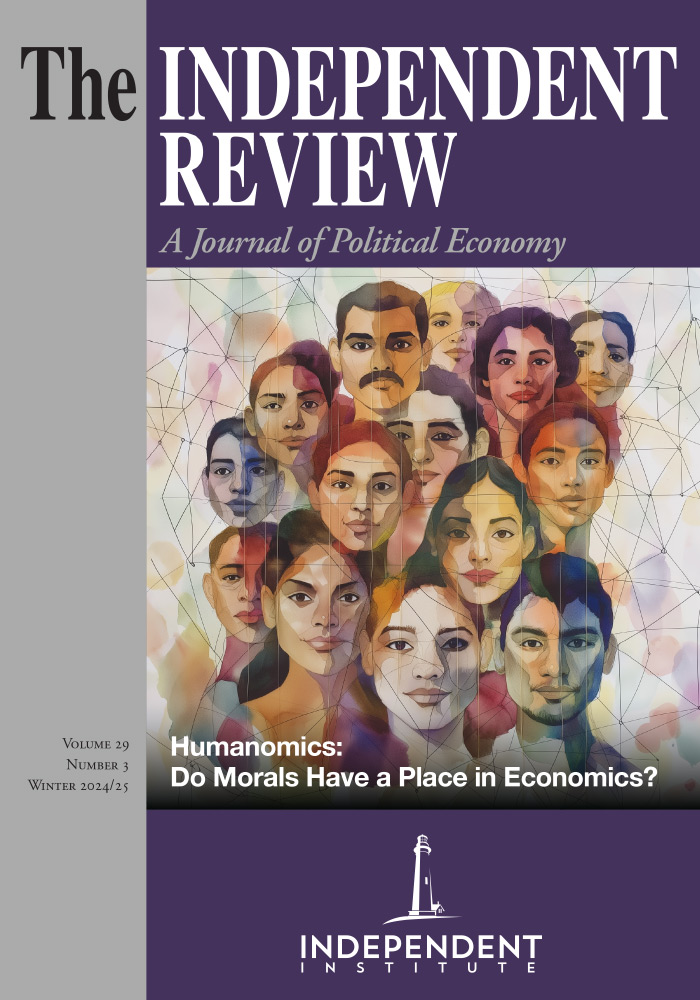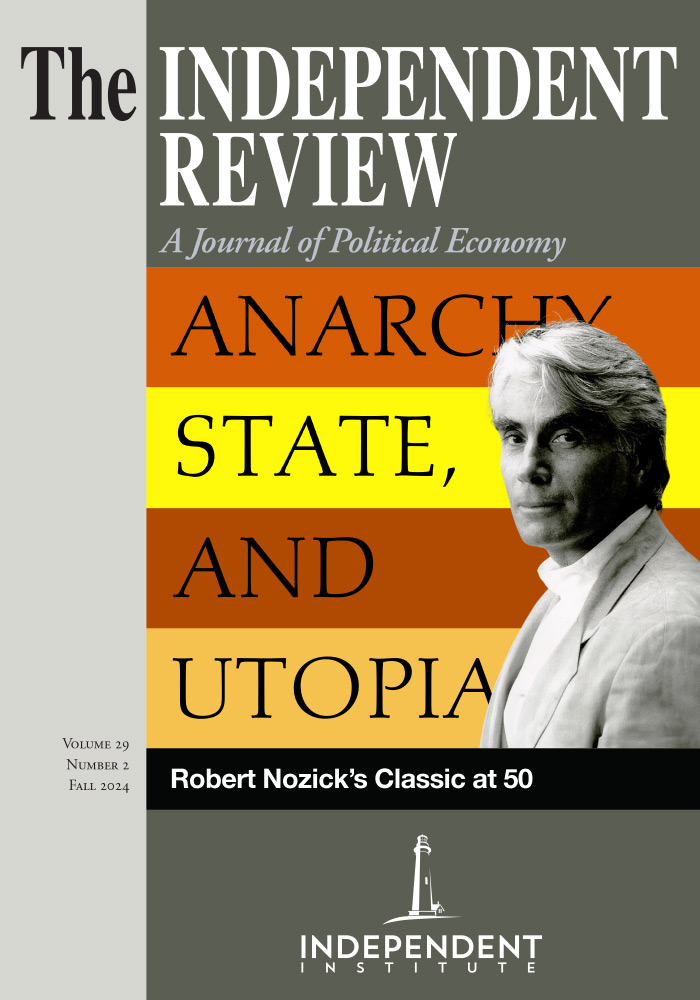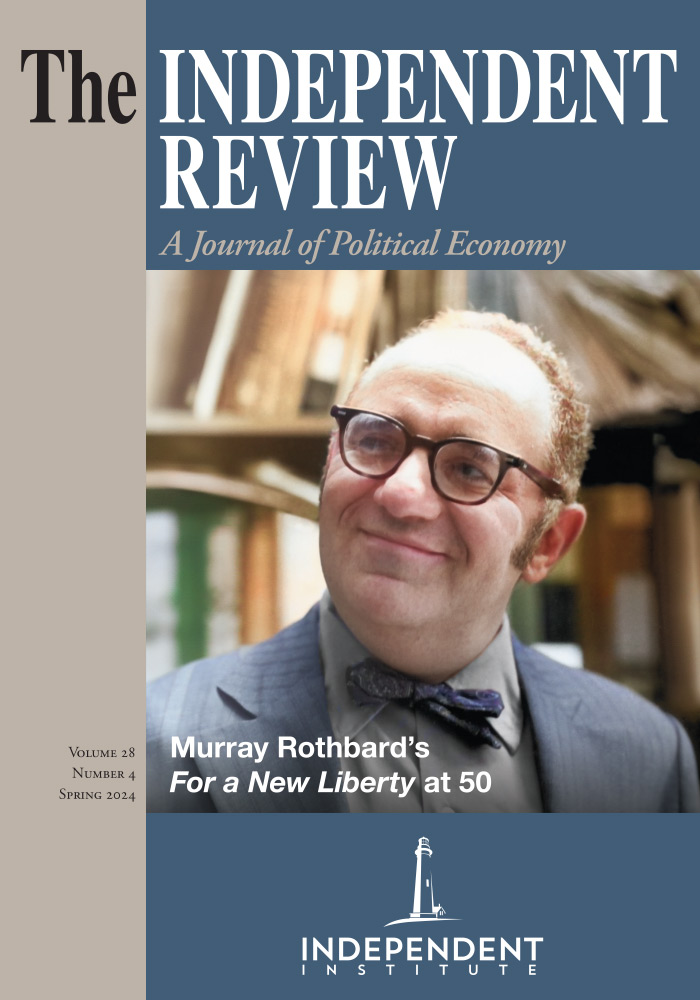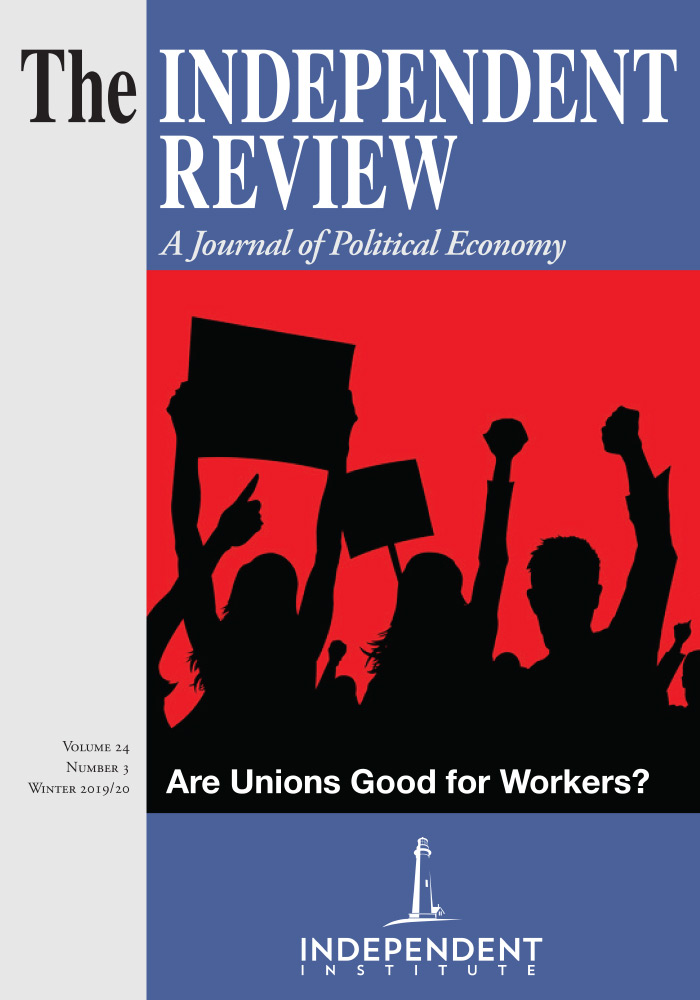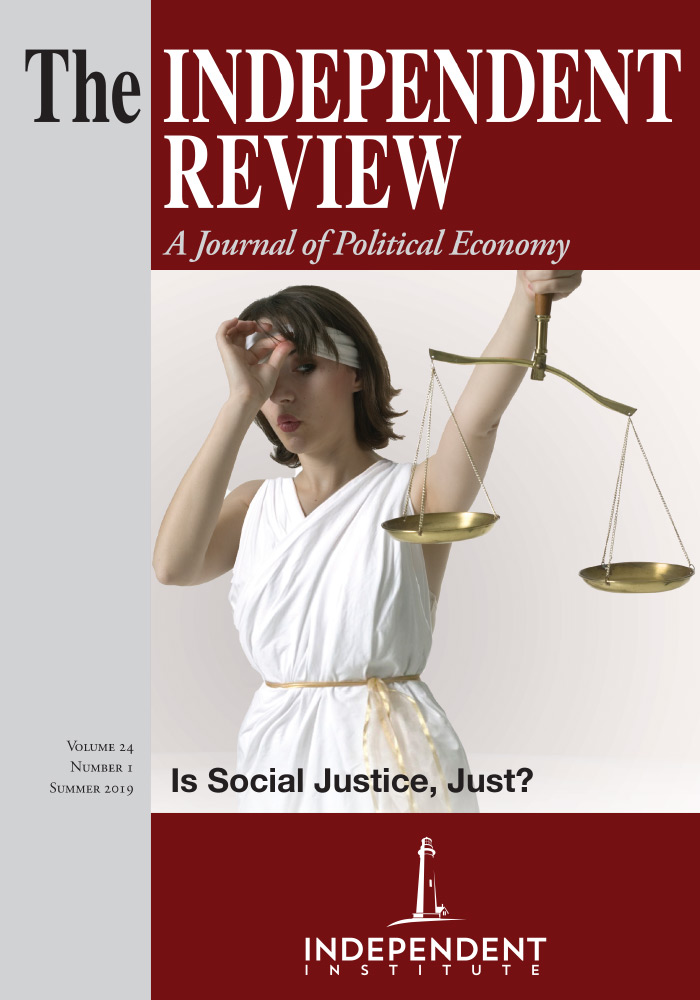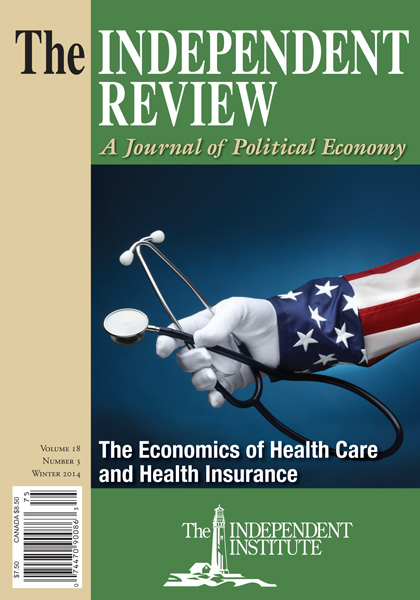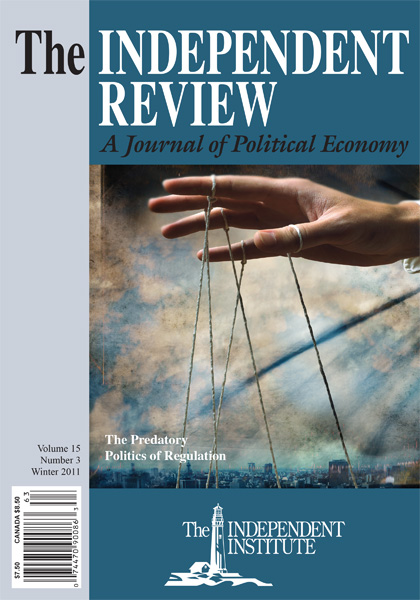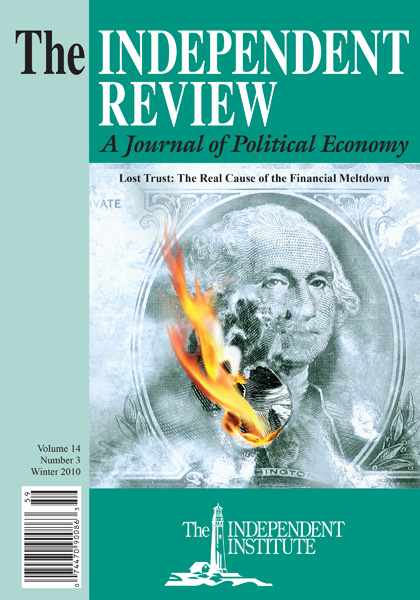A 2018 Gallup Poll set off alarm bells when it reported that young adults had a more positive view of socialism than capitalism. However, polls also show that many people no longer define socialism as central planning and government ownership of the means of production. To many people socialism is merely another form of capitalism: it’s about private production along with equality, getting free things, and being nice. This “Etceteras” piece explores numerous surveys on the attitudes of younger adults regarding capitalism and socialism, finding many surprises and considerable confusion.
Article
Do Millennials and Generation Zs think capitalism and capitalist market economies work well?[1] One reaction to this question, especially from those who have studied history, says “How could they not?!” After all, almost everyone in the world lived in what we today would consider to be abject poverty until capitalist market economies developed a few hundred years ago. As market economies matured and spread, prosperity blossomed and spread. Today, extreme poverty is rare and people around the world enjoy the highest standards of living in history, as well as the longest life expectancies, and more of other good things like good health, high levels of education, and considerable leisure time.
The Maddison Project database (Bolt and van Zanden 2020) documents these trends, showing that real GDP per capita around the world has exploded in the past two centuries—first in the areas that pioneered market capitalism (like the United States and Western Europe), then in places that later adopted its institutions.[2] Globally, real GDP per capita has risen about thirteen-fold since 1820, and the rise has been about 35-fold in the U.S. Max Roser (2024) pulls together compelling indicators of this progress, showing, for example, that the percentage of global population living in extreme poverty—which the World Bank defines as less than $2.15 per day (in 2017 dollars, or about $2.75 per day in 2024 dollars)—fell from 79 percent to 9 percent during this same period. One could also look at places that moved from other systems—for example, communism, toward capitalism and then experienced spectacular economic growth and its widespread material benefits, with China being the most obvious example. The benefits of capitalism are hard to miss—if you look. Perhaps more importantly, capitalism can also claim the moral high ground, as it has accomplished these marvels without relying on coercion, but rather on cooperation between buyers and sellers in product, labor, and other markets. The capitalist system redirects vices like selfishness by inducing people to work for the good of others (their customers), as well as to innovate and develop their talents.
However, although we are very prosperous by historical standards, we also have almost no historical memory, so we tend to forget these facts.
A Gallup poll from 2018 (Newport 2018a) showed that 56 percent of Americans had a positive view of capitalism. This poll set off alarm bells in many quarters by noting that favorable views of capitalism had slipped from 61 percent in 2010, with almost all the erosion among people aged 18 to 29. It found that positive views of capitalism among those aged 18 to 29 had fallen from 68 percent to 45 percent between 2010 and 2018, as a new cohort entered this age range. Moreover, the poll showed that more of these young adults had a positive view of socialism (51 percent) than capitalism (45 percent). A later survey (Victims of Communism Memorial Foundation 2020) found that 26 percent of Americans support the gradual elimination of the capitalist system in favor of a more socialist system—with support for elimination noticeably higher among Gen Zs (31 percent) and Millennials (35 percent).
Evolving Definitions: Socialism Becomes a Form of Capitalism
Are we to understand that the majority of younger adults favor a centrally planned economy in which the government owns the means of production and directs the economy (socialism) to private ownership and decentralized decision making (capitalism)? And that many young people favor eliminating capitalism and moving toward a state-run economy? Probably not—because another Gallup survey (Newport 2018b) shows that Americans no longer hold the traditional definition of socialism. Sorry, Karl and Vladimir, Americans don’t use your definition of socialism anymore—they use Bernie’s definition. When Gallup asked people to explain their understanding of the term “socialism,” the most common responses in 1949 included terms like “government ownership or control” (34 percent), but this fell to only 17 percent in 2018. The most widely used definition today is “equality—equal standing for everybody, all equal in rights, equal in distribution” at 23 percent. In third place is “benefits and services—social services free, medicine for all” (10 percent), and another 6 percent add wording like “talking to people, being social, ... getting along with people.”[3]
Likewise, a YouGov survey (Victims of Communism Memorial Foundation 2020, 20) finds that while 32 percent of Americans identify socialism as the government owning all property and controlling “nearly 100% of the national economy,” approximately equal in size (31 percent) are those who say that socialism means “a free market economy with private property but one where the government provides ample social welfare benefits.” And 15 percent equate socialism with “a free market economy with private property where the government intervenes when necessary to create an even playing field for all citizens and businesses.”
So, many Americans’ definition of socialism doesn’t make it a system that is distinct from capitalism. To them—perhaps those who are more likely to have a favorable opinion of socialism—it’s about private production along with equality, getting free things, and being nice. In some ways, this is surprisingly similar to the definition of capitalism. Capitalism has turned out to be about reducing the costs of things so that they are much closer to free. As Martin Tupy and Gale Pooley (2022) demonstrate, at prevailing market wages and prices the amount of time needed to buy a basket of fifty commodities fell by 72 percent between 1980 and 2018, and the time needed to buy finished goods and services fell at about the same rate. Likewise, markets are about being nice to people to get them to voluntarily interact with you, rather than forcing your will upon them as in other systems like socialism (traditional definition) and feudalism. This idea of doux (sweet) commerce was developed by Baron Montesquieu in The Spirit of the Laws (1734). The thesis argues that commerce and trade soften and polish what had been harsh, warlike, and barbaric values and behaviors—teaching individuals, and society as a whole, toleration and peaceful manners as it embodies the give-and-take of parties who can each walk away from any proposed exchange.
However, and this may be the crux of the matter, capitalism has not delivered equality—and it likely never will since people differ so much in their productivity, abilities, and inclinations; and many people seem to equate inequality with unfairness, although it is not clear that they should in most cases (see, for example, the essays in Whaples, Munger, and Coyne, 2019).
Beliefs about Fairness and the Route to Wealth
Similar to the Gallup survey, in an Axios survey (Wronski 2019), young adults aged 18 to 24 were more likely to have a positive view of socialism than capitalism—with 61 percent expressing a positive view of socialism and only 35 percent negative. Those aged 25 to 34 were more likely to have a favorable view by 7 percentage points, while every other age group had more negative views of socialism than positive views. A key may be that, among those 18 to 24, by a 76 percent to 21 percent margin more people say that “unfairness in the economic system that favors the wealthy” is a bigger problem than “over-regulation of the free market that interferes with growth and prosperity.” The gap is 60 percent to 34 percent among people aged 25 to 34—and gets progressively smaller among older cohorts.
A survey by the Cato Institute (Ekins 2019) finds that 70 percent of adults under 30 say that the wealth distribution in the United States is “unjust” and then asks: “Do you think most rich people in this country earned their wealth, or do you think that most rich people in this country got rich by taking advantage of other people?” A narrow majority of respondents under 30 think that taking advantage of other people is the road to riches in the United States. Older cohorts, by increasing margins, think wealth is earned. What else causes wealth? Among those under age 30, the top answers are “family connections” (45 percent), “hard work and grit” (38 percent), ambition (31 percent), and “getting lucky” (30 percent). Conversely, among older Americans the top responses about how wealth is created are exclusively about personal responsibility and actions: “hard work and grit” (62 percent), ambition (42 percent), self-discipline (32 percent), education (32 percent), and risk-taking (31 percent). Factors that are likely to be considered unfair—family connections and getting lucky, which topped the list among younger people—are missing from older people’s lists.
Informed by these earlier surveys, Christina Elson and Kylie King dig deeper in a series of surveys of young adults. They conclude that Millennials and Gen Zs are “very frustrated to see others achieving what they perceive as easy and unearned success” (Elson and King 2022, 1). A traditional belief of socialism says, “From each according to his ability, to each according to his needs” (Marx [1875] 2023, 59). Elson and King (2022, 22) find that 48 percent of Gen Zs, 50 percent of younger Millennials, and 45 percent of older Millennials agree that “rewards and benefits in society should be distributed according to what people need, not what they produce,” while only 24, 21, and 26 percent disagree. Whether or not they know it, these respondents hold a core socialist view—while adults as a whole reject the view.[4] A follow-up question asks whether “people should be allowed to keep what they produce, even if there are others with greater needs” (emphasis added). Strikingly, only about 40 percent of the three groups say people should be allowed to keep what they produce, while 30 percent are neutral, and a bit under 30 percent disagree.
Confused Ideas on Competition, the Role of Government, and the Nature of Private Property
Seemingly hard to square with these relatively socialist leanings, close to 70 percent of those surveyed by Elson and King agree that “[c]ompetition is good. It stimulates people to work hard and develop new ideas.” Similarly, hard to square with the widespread support for the idea of giving people what they need, rather than what they produce, is the fact that about 60 percent agree that “under a fair economic system, people with more abilities would earn higher salaries.” Only about one in eight disagree. Likewise, about two-thirds of young adults hold that “there’s nothing wrong with trying to make as much money as you honestly can,” while about one in six disagree with this sentiment.
Competition is good, but “rewards and benefits in society should be distributed according to what people need, not what they produce.” What gives? Perhaps the confusion about competition and rewards arises because many people surveyed don’t know what competition looks like. When Elson and King (2022, 38) asked, “Does the following industry lack competition?” about 60 percent answered “yes,” “maybe,” or “not sure” regarding “everyday retail and groceries (Walmart, Kroger, Amazon)”—leaving only 40 percent who disagreed with the idea that the retail industry lacks competition. That is, a mere 40 percent are pretty sure the crowded retail market is actually competitive. Yeses, maybes, and not sures concerning lack of competition were over half for the entertainment industry, as well.
What do Millennials and Gen Zs think the government should do? A lot, it turns out. Close to half hold that the government should set wages for jobs, and about half believe that the government (taxpayers) should provide a job to anyone who wants one—in each case about a quarter are neutral and only a quarter disagree. This suggests that many Millennials and Gen Zs are confused about the nature of government—failing to realize that these actions rely on coercion. While 67 percent agreed that “I don’t like to use pressure to get my way” and only 14 percent agree that “the best way to get adults to do something is to use force” (Elson and King 2022, 43), only a quarter of these young adults oppose outsourcing pressure and force to the government, to get their way through its coercive power.
Elson and King (2023a) followed up this first survey of young adults with additional questions that only add complexity (or is it confusion?) to the picture. Two similar questions evoke significantly different responses. When asked whether “people should be able to keep what they produce, even if there are others with greater needs,” only about half agreed (similar to the results above from the 2022 survey). However, when asked whether “the way private property is used should primarily be decided by its owner,” about 70 percent agreed. Only about one in ten disagreed. That’s a gap of almost 20 percentage points on two questions that are very similar—keeping what one produces and deciding how to use one’s property. Perhaps there is a confusion about what private property means. As the support of owners deciding how to use their property rises substantially with age, perhaps this reflects young adults accumulating more property, for example homes. Perhaps the support for “people should be able to keep what they produce, even if there are others with greater needs” makes some respondents think not of themselves as producers, but think rather of corporations: “I didn’t produce the food or the car, a big business did.”
Finally, when Elson and King (2023b) asked “which direction should the economy go?” 57 percent of Millennials picked “more free market” versus 28 percent who opted for “more state-directed.” Gen Zs leaned in the same direction: 40 percent toward freer markets, 28 percent toward more government. However, when asked about whether we need more private enterprise or more government in specific industries both groups were far more cautious about private enterprise—selecting “more government” over “more private enterprise” in education (by 45 percent to 27 percent), healthcare (by 53 percent to 23 percent), energy production (39 percent to 27 percent), and even housing (by 38 percent to 33 percent), with support for private enterprise strong only in technological development (42 percent to 23 percent).
Young adults as a group seem very confused about the economy. Or perhaps they are groping for a new economic system, one that Christina Elson (2024) calls “safety capitalism,” capitalism with all its upsides of innovation and rising standards of living but none of its downsides and risks (at least for themselves).
What Explains These Trends and How Can Classical Liberals Respond to Them?
The major findings from the surveys cited above are that support for capitalism among young adults has waned somewhat, while support for “socialism” has risen. However, it seems that this socialism is actually capitalism (private ownership), but with a bigger role for government in running the show and redistributing resources from the top to the bottom. The crux of the matter may be that many see capitalism as unfairly rewarding the rich too much, giving them more than they deserve, allowing them to extract wealth from others. About two-thirds of Millennials and Gen Zs agree that “[w]hen I get what I want, it’s usually because I worked hard for it” (with a bit under 10 percent disagreeing; Elson and King 2022, 50). So, they tend to think that their own success is earned but complain that the opposite is true among the wealthy. On the other hand, support for private property (if framed at the personal level) and the benign effects of competition remain high—but with the important caveats noted above.
What has driven this drift away from supporting capitalism among young adults? Many hypotheses are plausible. Perhaps perceptions about widening income inequalities are a root cause. Perhaps it reflects an attempt to escape responsibility, something we have seen in other realms—for example, the decline in marriage and birth rates and the expression “I don’t adult.” Perhaps the drift is partly driven by our educational system, which increasingly tilts in the statist direction and focuses attention on oppression and exploitation rather than cooperation and shared prosperity: “The world’s history is nothing but exploitation and oppression!” Many Millennials and Gen Zs might miss the joke that was current in Russia at the collapse of the Soviet Union: “In capitalism, man exploits man. Under socialism, it’s the other way around.”
Perhaps, as Anna Faria (2022) argues, most of this is cheap “virtue” signaling. She argues that once Millennials’ student debts have been paid off and their incomes have risen, the price tag of socialist policies will force them to reassess their position. Perhaps it reflects temporary (or not so temporary) problems with getting ahead and gaining a stable economic foothold. Elson and King (2023a, 6) find that about three-quarters of Millennials and Gen Zs see the costs of healthcare, college education, buying a house, and paying rent as a “problem for a stable society.” All of these costs have risen considerably in real terms in recent years, especially housing. If this is the issue, young adults’ support for capitalism would likely increase if they were to understand government policies, regulations, and mandates that have increased all of these prices substantially.
Perhaps, ironically, it may reflect rising materialism in society. Timothy Taylor (2024) points out that college students have become more focused on their own material success. He reports figures from the Higher Education Research Institute, which asked college students about the importance of “being very well-off financially.” The percentage saying that this is “essential” or “very important” rose from 43.5% in 1967 to 70.9% in 1985 to 84.5% in 2022. In fact, this was the top objective of both male and female students (whose percentages were virtually identical) surveyed in 2022—well above objectives like “raising a family” (64.5%), “developing a meaningful philosophy of life” (48.6%), and “working to correct social inequalities” (56.7%).
What can a proponent of classical liberalism—who has concluded that the market capitalist system yields widespread prosperity and is broadly fair (excepting cases like crony capitalism or state-directed capitalism)—make of this?
Support for capitalism, socialism, or any other-ism is always a battle of ideas, but I think that the ideas and facts are on the side of greater support for the capitalist market system and that basic ignorance underlies much of the tilt toward “socialism.” An educational game plan to move the needle might begin with the facts I outlined at the beginning of this paper on the historical link between the spread of market capitalism and economic prosperity and references to the ideas of thinkers like F. A. Hayek, who have explained that market capitalism—not socialism with its coercion—holds the moral high ground. In addition, it is probable that many supporters of redistribution and bigger government don’t realize the extent of redistribution currently in place. It turns out that we already live in a world of massive, growing redistribution. The new findings of Gerald Auten and David Splinter (2024) need to be disseminated. They refine earlier estimates of income inequality by bringing in forms of income that don’t appear on tax returns, as well as making adjustments for things like changing household sizes and arrangements. They also include estimates of the dollar value of all transfers and government services people receive. The results are striking. They find that the share of after-tax-and-transfer income going to the top 1 percent barely changed between 1960 and 2019, rising just a bit, from 8.1 percent to 8.8 percent. They find that the after-tax-and-transfer share of every group—top, middle, and bottom—has been fairly constant, such that average inflation-adjusted per capita incomes have more than tripled across the board.
The market economy has yielded greater inequality due to things like technological changes that have reduced the relative demand for less-educated workers but increased the demand for those with college educations. Pay gaps have widened. But in response we have made the tax system much more progressive than it was back in the 1960s. Despite headlines screaming that the marginal taxes on the rich have fallen (they have), Auten and Splinter show that their average tax rates have risen as loopholes have been closed. They estimate that transfers to the bottom 40 percent have soared, so that the after-tax-and-transfer incomes of the bottom 20 percent of the population are almost 150 percent greater than what they earn before taxes. This, along with explosion of economic growth in the past two centuries, is one reason why it is estimated that the poorest 5 percent of Americans today have incomes that are higher than 95 percent of all the human beings who have ever lived (Whaples 2022).
If Millennials and Gen Zs think that the system is unfair, it is incumbent on us to let them know how the system works, at both an empirical and a theoretical level. At the empirical level, the current system works by encouraging talented, hardworking people to be productive and innovate—and then forcing them to give a significant fraction of their income to people who earn less.
Likewise, simply exposing students to ideas about how markets work—such as the forces of supply and demand, and concepts like the win-win nature of trade (consumer and producer surplus)—appears to change their attitudes about the fairness of markets. Whaples (1995) compared the responses of introductory economics students on the first day of the semester and (in other course sections) students at the end of the semester. The survey asked questions (taken from Shiller, Boycko, and Korobov 1991) including: “On a holiday, when there is a great demand for flowers, their prices usually go up. Is it fair for flower sellers to raise their prices like this?” “A small factory produces kitchen tables and sells them at $200 each. There is so much demand for the tables that it cannot meet it fully. The factory decides to raise the prices of its tables by $20, when there was no change in the costs of producing tables. Is this fair?” And “a small business buys vegetables from some rural people, brings the vegetables to the city, and sells them, making from this a large profit. The company honestly and openly tells the rural people what it is doing, and these people freely sell the company the vegetables at the agreed price. Is this behavior of the company, making large profits using the rural people, acceptable from a moral point of view?” Across the board, the survey found that taking the Introduction to Economics course (at Wake Forest University) statistically significantly increased the probability that these actions were perceived as fair. The results were much stronger for female students (a very high percentage of the male students initially found the actions fair, so there wasn’t as much room to rise). The results held for all six of the professors in the study, including one who was an avowed socialist (the old-fashioned kind).
Notes
[1] Millennials are the cohort born between 1981 and 1996. Gen Zs are born between 1997 and 2012.
[2] These data are presented visually here.
[3] These percentages don’t add up to anything near 100 percent, because 23 percent offered no opinion. Six percent said “modified communism, communism,” and 9 percent mentioned restrictions on freedoms and other “derogatory” comments.
[4] It might be noted that today’s immense prosperity means that basically everyone in society today gets far more than they actually “need,” and that wants have turned into “needs.” Note also that the “give people what they need, not what they’ve produced” idea fundamentally ignores the fact that production doesn’t generally occur unless people are rewarded for their effort.
References
Auten, Gerald, and David Splinter. 2024. Income Inequality in the United States: Using Tax Data to Measure Long-Term Trends. Journal of Political Economy 132 (7): 2179–2227.
Bolt, Jutta, and Jan Luiten van Zanden. 2020. Maddison Project Database 2020.
Ekins, Emily. 2019. What Americans Think about Poverty, Wealth, and Work: Findings from the Cato Institute 2019 Welfare, Work, and Wealth National Survey. Cato Institute.
Elson, Christina. 2024. Gen Z Believes Safety and Failure Can Coexist in Capitalism. Fast Company.
Elson, Christina, and Kylie King. 2022. Views of Democracy, Egalitarianism and Capitalism among Millennials and Gen Zs. Wake Forest University Center for the Study of Capitalism.
———. 2023a. The Socialist Generations? What Millennials and Gen Zs Really Think about Work, Effort, Opportunity, and Economic Outcome. Wake Forest University Center for the Study of Capitalism.
———. 2023b. Capitalism Satisfaction Barometer: Gauging America’s Views on Capitalism to Forecast Its Future. Wake Forest University Center for the Study of Capitalism.
Faria, Anna B. 2022. Comrade Snowflake? Why Millennials Won’t Be Socialists Forever. The Independent Review 27, no. 2 (Fall): 243–71.
Marx, Karl. (1875) 2023. Critique of the Gotha Program. PM Press. Montesquieu. 1734. The Spirit of the Laws.
Newport, Frank. 2018a. Democrats More Positive about Socialism Than Capitalism. Gallup, August 13.
———. 2018b. The Meaning of “Socialism” to Americans Today. Gallup, October 4.
Roser, Max. 2024. The Short History of Global Living Conditions and Why It Matters That We Know It. Our World in Data.
Shiller, Robert J., Maxim Boycko, and Vladimir Korobov. 1991. Popular Attitudes toward Free Markets: The Soviet Union and the United States Compared. American Economic Review 81 (3): 385–400.
Taylor, Timothy. 2024. What Are the Objectives of First-Year College Students? Conversable Economist, April 11
Tupy, Marian L., and Gale L. Pooley. 2022. Superabundance: The Story of Population Growth, Innovation, and Human Flourishing on an Infinitely Bountiful Planet. Cato Institute.
Victims of Communism Memorial Foundation. 2020. U.S. Attitudes toward Socialism, Communism, and Collectivism.
Whaples, Robert. 1995. Changes in Attitudes among College Economics Students about the Fairness of Markets. Journal of Economic Education 26, no. 4 (Autumn): 308–13.
———. 2022. Where Do the Poorest Americans Stand in the Income Distribution among All People Ever Born? The Independent Review 27, no. 1 (Summer): 155–59.
Whaples, Robert, Michael C. Munger, and Christopher J. Coyne. 2019. In All Fairness: Equality, Liberty, and the Quest for Human Dignity. Independent Institute.
Wronski, Laura. 2019. Axios/SurveyMonkey Poll: 2019 World Economic Forum.
| Other Independent Review articles by Robert M. Whaples | ||
| Spring 2025 | Not Stolen: The Truth about European Colonialism in the New World | |
| Spring 2025 | Green Breakdown: The Coming Renewable Energy Failure | |
| Spring 2025 | Heavy Metal: Earth’s Minerals and the Future of Sustainable Societies | |
| [View All (106)] | ||

